Technical article
Optical triangulation sensors are widely used in various applications and have emerged as a practical and contactless object detector.
From the simplest applications, such as hand detectors for automatic faucets in most public restrooms, to high-precision devices capable of measuring changes in surface roughness or thickness. Optical triangulation is a simple principle that can be designed differently depending on the application requirements. the
A simple illustration of a triangulation sensor is shown below: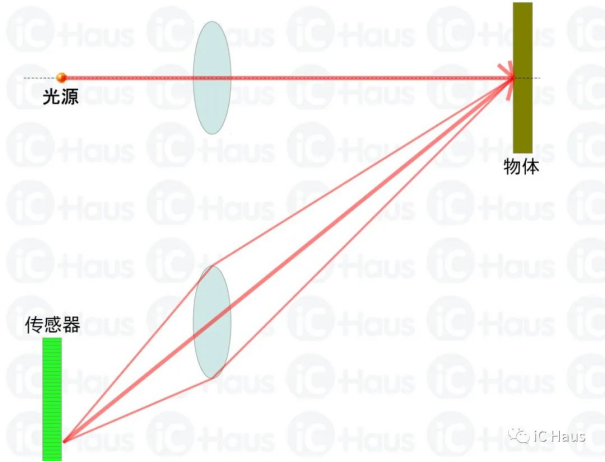
A triangulation system basically consists of a light source (LED or laser), an optical sensor (usually a PSD or CMOS linear sensor), and optical elements in between (lenses, filters, etc.). Depending on the presence and distance of an object, the received light beam will reach different positions on the optical sensor. By evaluating where the sensor receives light, we can calculate the distance to the object.
Sensors can have integrated signal processing circuitry, or can use an external controller for processing. The controller can also drive the light source as needed.
iC-Haus offers different chips for this application, both for the transmitter and receiver.
This article will focus on the receiver side (sensor), while the transmitter side will be covered in a follow-up article.
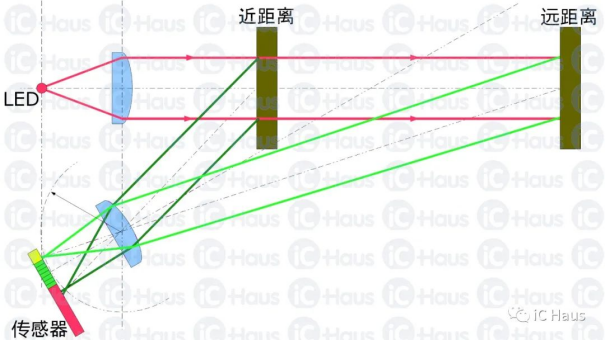
As shown in the picture above, when light reflects off an object and reaches the sensor, the distance of the object will determine where the light beam hits the sensor. Changing the distance changes the position of the illuminated sensor, so in order to properly assess the distance we need a linear optical sensor.
Linear optical sensors are usually PSD (Position Sensitive Detector: Position Sensitive Detector) or CMOS (or CCD) pixel arrays. A sensor can be 1D or 2D, but for distance or object presence detection, only 1D is required, which is the case this article will cover.
PSDs typically provide two analog output signals that represent the balance (distribution) of the received light in one direction or the other.
These signals can be processed to easily identify if the beam is beyond a certain position. This makes the PSD suitable for triangulation sensors with switching outputs, e.g. for water taps, door open/close systems, automated production lines where individual products must be sensed or counted, etc.
Distances can also be calculated using PSD, but the accuracy may be reduced if the measurement conditions are not well controlled.
iC-OD and iC-ODL are good examples of the use of PSD in such applications from iC-Haus.
The iC-OD(L) features an integrated amplifier for improved signal processing and a bandpass filter to remove high frequency noise while rejecting the effects of background lighting or other unwanted light sources.
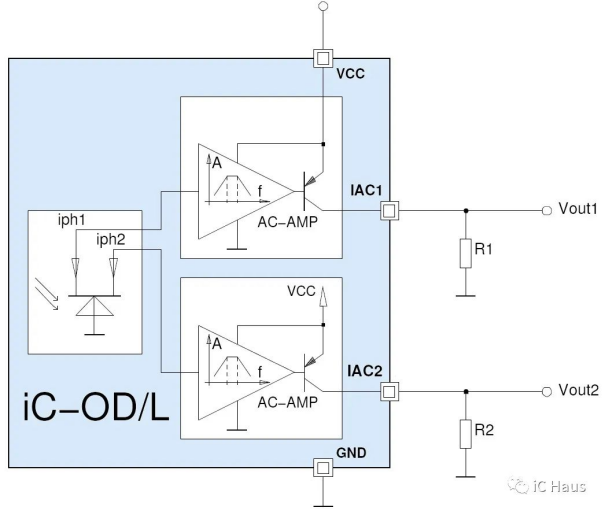
Typically, higher precision applications prefer to use CCD or CMOS pixel arrays because of the different types of signal processing and higher precision that can be achieved.
These pixel arrays are image sensors, so light intensity information can be acquired individually for each pixel. Depending on the requirements, the signal can be processed on-chip or passed to an external MCU/DSP/CPU, which is programmed to calculate the required values (such as distance, presence, etc.) from the pixel information.
iC-Haus' iC-LF series and iC-LFH series are CMOS linear image sensors. They vary in length (number of pixels) and pixel density (higher in the iC-LFH series).
The output is an analog voltage proportional to the received light intensity of the pixel (light-to-voltage conversion is integrated over a certain time), and the voltage from different pixels is serially output using a clock signal.
These sensor chips have an integrated signal amplifier and also provide a shutter function to allow the system to control the integration time.
Precise light intensity signals from the iC-LF(H) series are fed to the A/D converter, and algorithms in the external MCU/DSP/CPU can process the digital data and perform complex calculations with extremely high precision. This solution is suitable for precision distance measurement equipment, including object thickness measurement, surface flatness measurement, etc.
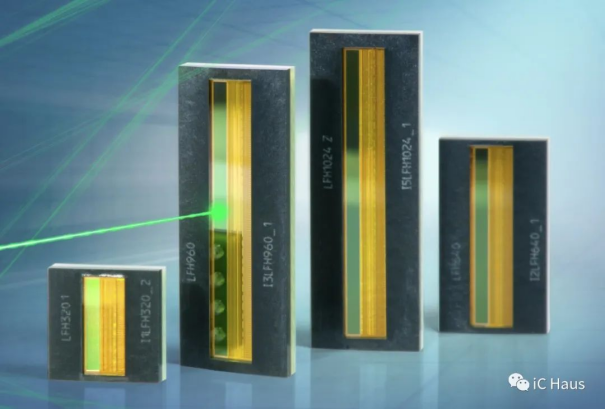
For a compact triangulation solution with digital on/off output, iC-Haus offers the fully functional iC-LO sensor chip. iC-LO integrates all triangulation functions and offers a high degree of flexibility through parameter configuration such as SPI communication via a low-cost MCU.
It is characterized by:
129 pixel array
Integrated on-chip low-latency signal processing to detect object presence/absence
Digital on/off output
Configurable switching distance (any object within this distance will trigger the output switch)
low light warning
Ambient Light Suppression
Pulsed LED Drivers: Directly drive light sources with pulses up to 1A current (eliminating influence from other light sources, increasing pulse power for higher distances). the
With this level of integration, external circuitry and MCU programming are greatly simplified, accelerating product development and improving reliability.
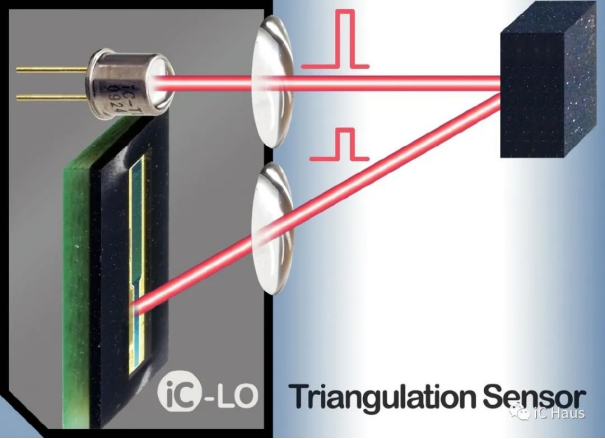
In the end, how good the results are depends on the various parts of the system: good results come from good signal processing algorithms, but those algorithms need to deliver accurate signals, which requires good optical sensors. Optical sensors, on the other hand, only produce a good output signal when they receive the right amount of light, which largely depends on the quality of the light source and the optical lens used.





